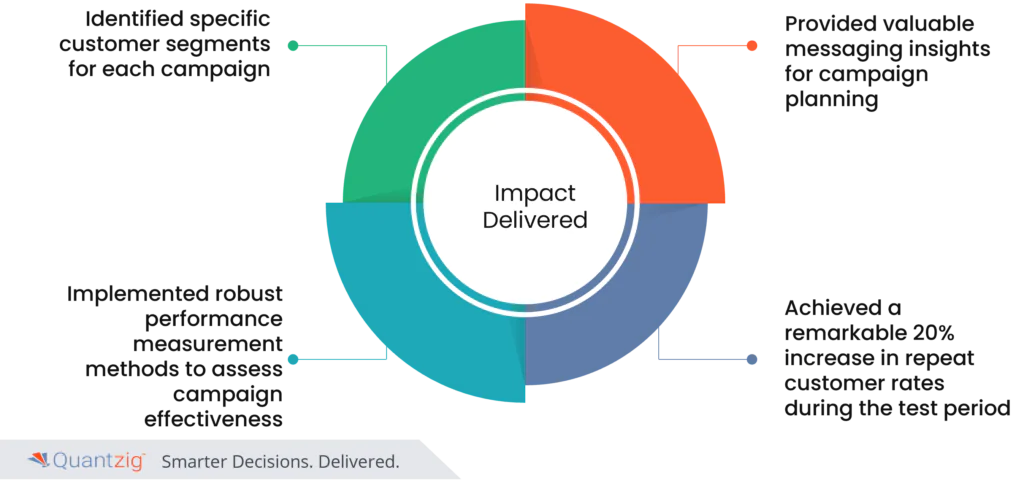As the tide of digitalization sweeps through commerce, CPG firms are increasingly embracing the Direct-to-Consumer (D2C) model. This pivotal strategy, fueled by ROI (return on investment) and technology budget innovation, offers a crucial lifeline in the ever-evolving marketplace. The shift towards D2C, fortified by D2C revolution and data-driven insights, signals a profound metamorphosis. Freed from the constraints of traditional supply chains and intermediaries, CPG firms now leverage the prowess of eCommerce platforms to forge direct connections with consumers. This transition transcends mere adaptation to digitalization; it’s a revolution that reshapes brand awareness, customer experiences, and market strategies.
Both B2B and B2C retailers must chart a course through this shifting paradigm, guided by insights from the D2C Selling Guide. This journey requires strategic foresight and a keen understanding of the interplay between technology budget, data, and consumer behavior to unlock the full potential of digital transformation in the CPG industry.
Book a demo to experience the meaningful insights we derive from data through our d2c analytics tools and platform capabilities. Schedule a demo today!
Request a Free DemoTable of Contents
Importance of digital transformation in the FMCG Industry

The Consumer-Packaged Goods (CPG) companies, standing at a critical crossroads, must embrace digital transformation and pivot towards a Direct-to-Consumer (D2C) approach to remain competitive in digital commerce and relevant while keeping costs low.
- Recognizing the shift in consumer behaviors and preferences, transforming CPG firms are leveraging digitalization, data analytics.
- AI solutions to connect with consumers more effectively. This evolution is marked by a growing demand for personalized experiences, engaging brand interactions, where quality consumer products are complemented by a deeper understanding of consumer needs.
In this journey towards digital commerce excellence, it’s imperative for marketers to optimize ROI (return on investment), allocate resources efficiently within the budget, and leverage the D2C Selling Guide effectively. Both B2B and B2C retailers are reaping the benefits of the D2C revolution as they navigate the intricacies of eCommerce platforms and elevate brand awareness. This shift also influences decision-making, procurement practices, and contract negotiations across the industry, presenting new growth opportunities for those who adapt swiftly and strategically.
CPG’s digital transformation D2C strategy is more than an upgrade—it represents a fundamental strategic reorientation. Companies must harness data and technology budgets to personalize products and experiences for individual consumers. The challenge lies not only in contending with digital-native competitors but also in optimizing supply chain processes, capitalizing on supply chain benefits, and expanding CPG digital marketing strategies for a seamless omnichannel experience.
Moreover, executing digital transformation D2C initiatives effectively can significantly boost ROI and strengthen brand presence. It is crucial for marketers to allocate budgets wisely, guided by insights from the D2C Selling Guide tailored for both B2B and B2C contexts. Embracing the D2C revolution and refining eCommerce strategies can unlock substantial growth. This requires informed decision-making, streamlined procurement, and strategic contract negotiation to navigate the complexities of today’s digital marketplace.
Challenges in Implementing Data-Driven Transformations for the CPG Industry

Navigating the complexities of implementing data-driven transformations presents a significant challenge for the Consumer-Packaged Goods (CPG) companies. As the landscape evolves, propelled by shifting consumer preferences and technological advancements, D2C (direct-to-consumer) strategies emerge as a pivotal solution. However, achieving positive results amidst this digital native competitors revolution demands a strategic approach that addresses various facets of the industry. From established giants like Amazon to emerging disruptors such as Boomf and Sunski with their innovative confetti bomb greeting cards, the competition is fierce.
Manufacturers and brands alike seek to solidify their positions, striving to become the market leader in a rapidly evolving environment. This pursuit requires substantial investment in technology and support infrastructure to unlock new revenue streams and expand product ranges. Balancing retail prices across wholesale and direct channels is crucial to meet the diverse needs of customers, from small business owners to contractors and homeowners. Providing a seamless shopping experience through intuitive product catalogs and user-friendly interfaces enhances customer engagement, fostering meaningful relationships. Leveraging personalized experiences product recommendations, CPG companies aim to capture consumer interest and drive sales in an increasingly competitive market landscape.
As CPG manufacturing companies navigate the shift to data-driven, digital-first strategies, they encounter several key challenges:
- Balancing Agility and Integration: Chief Data Officers (CDOs) face the challenge of balancing agility and integration in their digital transformation journey. They must decide whether to manage digital data independently for quicker time-to-market and rapid insights or integrate it into existing legacy systems for consistency, which could lead to major disruption. Each approach has its merits and drawbacks, demanding a strategic balance to ensure effective digital transformation.
- Data Silos vs. Data Integration: Independent data management strategy can foster innovation but may result in fragmented data silos. On the other hand, integrating digital data into legacy systems can ensure consistency but might slow down the decision-making process, affecting real-time responsiveness.
- Navigating Digital Evolution: The CPG industry must navigate the digital evolution effectively, encompassing everything from supply chain disruptions optimization to developing robust e-commerce platforms and innovative marketing strategies.
- Data Governance and Strategy: Effective data governance and a future-proof digital transformation strategy are crucial. They ensure organizations remain agile and resilient, avoiding potential pitfalls in data management strategy and utilization.
Additionally, in this journey towards digital transformation trends, CPG companies must consider aspects such as payment options, transactions, and communication to enhance autonomy and provide seamless product information. It’s akin to running a marathon with occasional sprints to meet evolving consumer demands. Whether it’s B2B manufacturers of industrial-grade turbine blades or suppliers of aircraft engines and gym equipment like resistance bands and dumbbells, understanding the audience and delivering exemplary customer service and post-purchase support is paramount. This involves managing returns, optimizing infrastructure, and implementing loyalty programs based on feedback gathered through digital transformation trends technology.
These challenges underscore the complexity of digital transformation trends in the CPG industry. Overcoming quicker time to market, commitment, and giving the best products, requires careful planning, a balanced approach to data management strategy, and a commitment to continuous innovation to avoid any disruption.
Benefits of Implementing Data-Driven Transformations within the FMCG digital transformation

In the rapidly evolving landscape of the Consumer-Packaged Goods (CPG) companies, the implementation of Data-Driven Transformations emerges as a pivotal strategy for staying competitive and relevant. As the industry witnesses a shift towards digitalization and consumer preferences continue to evolve, CPG companies are increasingly recognizing the benefits of harnessing data to drive their operations and enhance customer experiences.
In this introduction, we delve into the pros and cons of adopting data-driven approaches in the CPG sector, exploring how platforms like Abode Commerce, Magento, Shopify Plus, BigCommerce, and WooCommerce are reshaping the industry landscape. From the monolithic structures to the headless architectures, the realm of digital commerce offers a myriad of solutions for businesses to adapt and thrive.
Furthermore, as CPG companies explore avenues beyond traditional retail channels, the role of marketplaces and CommerceTools in facilitating seamless transactions and expanding market reach cannot be overstated. From established giants like SAP or Hobbyists to innovative disruptors like TradeIt, the ecosystem is ripe with opportunities for growth and innovation for the Vehicle owners in the Automotive industry.
Amidst this digital transformation, the automotive industry stands out as a prime example of adaptation and resilience. From engine parts to suspension systems, Digital marketing reach to the DIY enthusiasts, DIY aficionados, and vehicle owners alike are turning to digital platforms to fulfill their needs. Whether it’s reaching out to small workshops or establishing a robust web presence through a Google Business profile or a Facebook page, the automotive sector exemplifies the power of online advertising and influencer marketing. Collaborations with automotive bloggers, YouTubers, Google ads and review platforms play a pivotal role in shaping brand perception and driving sales.
In this dynamic landscape, success depends on the ability to adapt swiftly and leverage performance metrics—such as website traffic, conversion rates, and average order value—for data-driven decision-making. The rise of digital transformation D2C strategies further empowers automotive businesses to bypass traditional channels and connect directly with consumers, enhancing personalization and accelerating growth. As we examine the transformative impact of digital strategies in the CPG industry, it becomes clear that the journey to digital excellence is not merely about embracing change, but about capitalizing on the vast opportunities it creates.
The shift towards data-driven digital technology investments transformation in the CPG industry brings a host of significant benefits:
- Enhanced Consumer Insights: By leveraging data analytics and AI through proper research, CPG companies gain deeper insights into consumer behavior and preferences. This knowledge is critical for tailoring product offerings and enhancing customer experiences.
- Optimized Digital Presence: Digital transformation D2C empowers CPG brands to enhance their online presence across e-commerce platforms and digital touchpoints, ensuring they cater to evolving consumer expectations. In an age where a substantial share of consumer interaction and sales occurs online, a strategically optimized digital footprint is essential for relevance and growth.
- Supply Chain Efficiency: The integration of digital technologies streamlines supply chain management, inventory tracking, and logistics. This leads to faster, more efficient operations and the ability to respond quickly to market demands.
- Increased Customer Engagement: Utilizing digital channels like mobile apps and social media platforms enhances customer engagement and brand loyalty. Engaging with consumers through these platforms allows CPG companies to build stronger, more personal connections with their audience.
- Market Adaptability: Digital transformation equips CPG companies with the agility to adapt to market trends and consumer preferences rapidly, ensuring they remain competitive in a constantly evolving market.
In summary, the implementation of data-driven transformations and digitization positions CPG companies for future success in the digital technology investments age. It empowers them to connect with consumers more effectively, optimize operations, and stay ahead of market trends. By leveraging data analytics and AI, CPG companies can enhance customer relationships, thereby improving customer retention rate and reducing customer acquisition cost. This leads to increased profits and sets the stage for business change, Increased profits and Digitization ensuring that CPG companies are prepared for the challenges and opportunities of tomorrow’s marketplace.
Experience the advantages firsthand by testing a customized complimentary pilot designed to address your specific D2C analytics requirements. Pilot studies are non-committal in nature.
Request a Free PilotHow Quantzig applies digital transformation for a CPG client?
As an expert in the domain, Quantzig have explored through the CPG arena via various business use cases and through R&D (Research and Development).
Client Details:
A leading European athleisure brand, boasting an annual revenue exceeding $8 billion, faced challenges in enhancing its e-commerce operations.
Challenges faced by the client:
The brand’s e-commerce team sought an effective method to identify potential repeat customers. Their goal was to recognize and engage customers likely to make future purchases, thereby fostering loyalty and driving long-term profitability.
Solutions offered by Quantzig:
Quantzig embarked on a comprehensive approach with digital transformation in cpg industry to address these challenges:
- Establishment of a Customer 360 Datamart: We initiated by creating an integrated data repository, encompassing demographic data, transaction history, channel preferences, and behavioral insights. This consolidation was crucial for a holistic view of the customer journey.
- Attribute Identification and Analysis: Our team conducted an exhaustive examination of potential attributes influencing customer purchasing behavior. This allowed us to understand the factors driving customer decisions.
- Segmentation and Targeting: Through in-depth analysis, we identified customers with a higher likelihood of repeat purchases and pinpointed the attributes influencing their behavior.
- Activation Plan Implementation: We developed tailored activation plans for both inner-loop activities (like website interactions) and outer-loop initiatives (including marketing reach campaigns). These strategies were designed to optimize the customer journey and enhance engagement and retention.
Impact Delivered using data engineering and platforms at digital transformation:

- 20% increase in repeat customer rates during the test period.
- Significant improvement in customer engagement and retention.
- Enhanced effectiveness of marketing campaigns and promotional activities.
Our solutions demonstrate Quantzig’s expertise in driving digital technology investments transformation for CPG businesses. By leveraging data-driven insights and innovative strategies for digital transformation for cpg, we help brands unlock new levels of customer engagement, business strategy and business success in the digital marketplace.
Get started with your complimentary trial today and delve into our platform without any obligations. Explore our wide range of customized, D2C analytical solutions built across the analytical maturity levels.
Start your Free TrialCharting the Future with Digital Transformation in the CPG Industry
The journey towards digital transformation in the CPG industry is both challenging and replete with opportunities depending on the resources. As companies pivot towards data-driven, D2C strategies, they unlock new avenues for connecting with consumers, offering bespoke products, and creating personalized experiences.
This digital era redefines the essence of commerce, production, and consumer engagement, presenting a future where consumer desires and business innovation intersect harmoniously. The challenges are substantial, but the potential for growth and transformation is immense. In this symphony of data and digital innovation, the CPG industry is poised to create a harmonious future, balancing consumer needs with business excellence.



